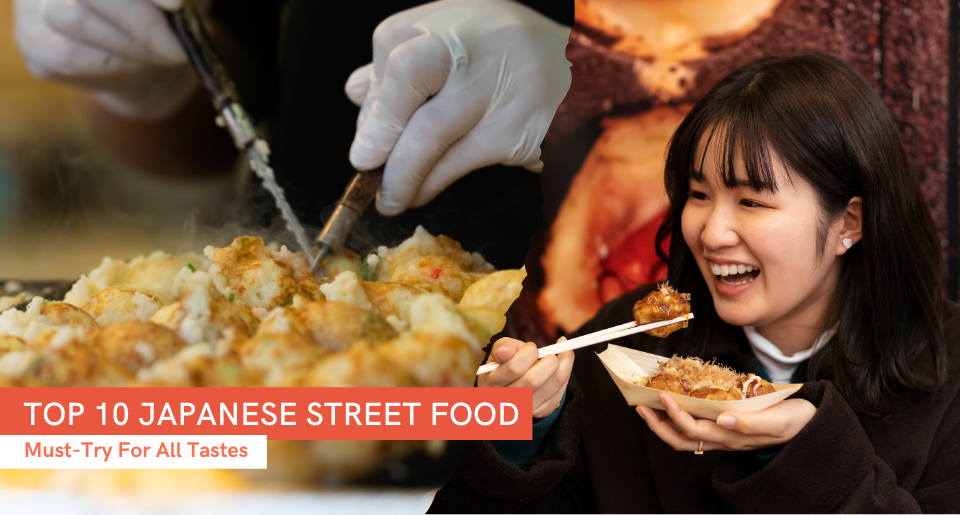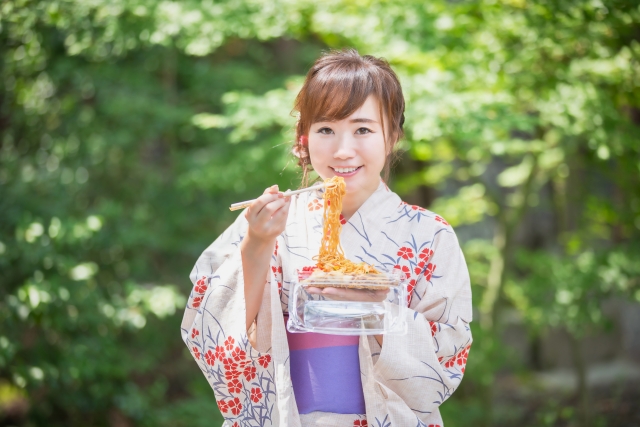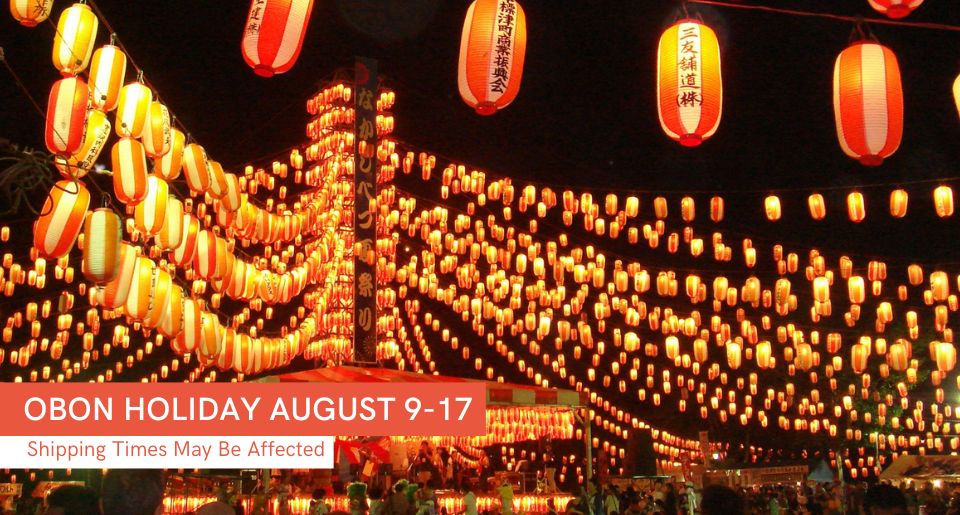Contents
- Okonomiyaki: The 'As You Like It' Pancake
- Dango: Sweet Rice Dumplings
- Taiyaki: Fish-Shaped Sweet Treat
- Onigiri: Rice Ball Snack
- Senbei: Crunchy Rice Crackers
- Yakisoba: Stir-Fried Buckwheat Noodles
- Kushiten: Not Your Average Tempura
- Gyoza: Japanese Dumplings
- Ramen: The Iconic Japanese Noodle Soup
- Kakigori: Shaved Ice Dessert
- Craving Some? Time to Treat Yourself!
- About The Writer
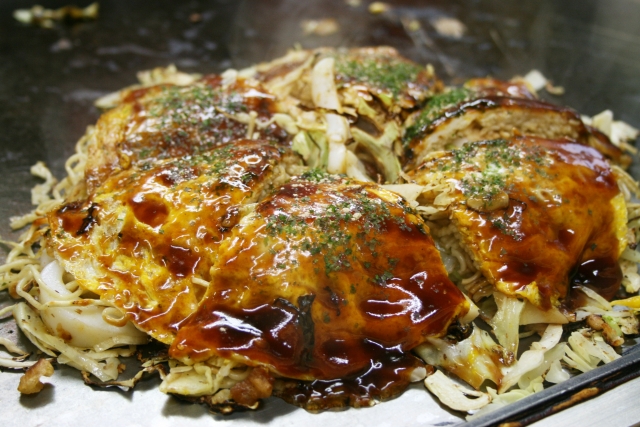
Japan's street food vibe is electric and filled with the kind of delicious smells that make you want to eat your way through the country. From filling main dishes to savory snacks you can munch while walking, to the dreamiest Japanese desserts, the streets of Japan offer everything you need to leave you happily stuffed any day of the week.
Let's dive into 5 of the most popular Japanese street foods you need to try, plus how you can immerse yourself in the lively world of Japanese street food and enjoy all its delicious treats, even if a trip to Japan is still on your wishlist!
Okonomiyaki: The 'As You Like It' Pancake

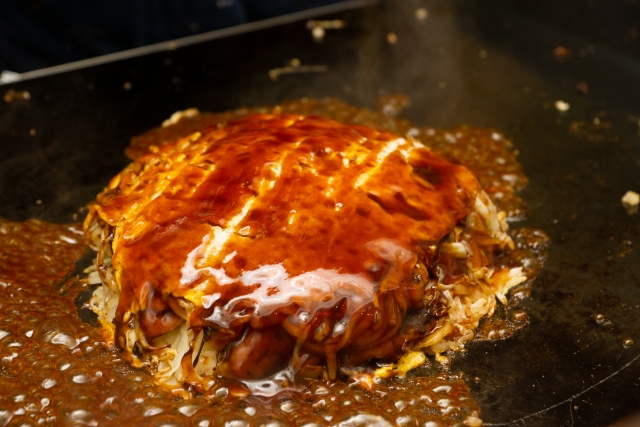
From the streets of Hiroshima and Osaka comes okonomiyaki, which is derived from the word okonomi, meaning or "what you like" or "how you like", and yaki, meaning "grilled."
Okonomiyaki is a thick, savory pancake filled with everything you like, from seafood to pork belly, topped with a special sauce, mayo, and bonito flakes.

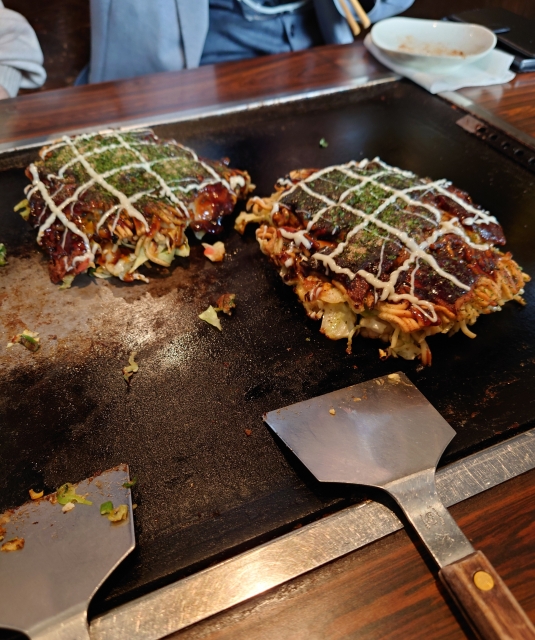
This dish nails the perfect crispy and creamy texture, with ingredients and toppings that meld together for an unforgettable taste. It's the kind of flavor that keeps you coming back for more okonomiyaki!
Dango: Sweet Rice Dumplings

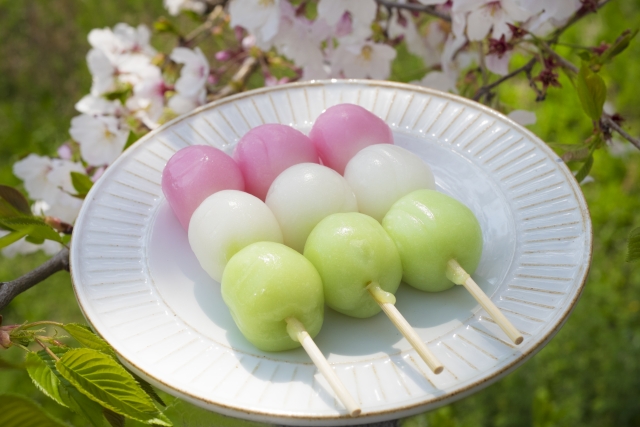
You've likely seen these iconic three colors in anime, right? Those are the famous dango skewers with mochi-like dumplings, traditionally coated in a shiny, syrupy sauce.
Made by combining rice flour with both uruchi and glutinous rice flour, dango stands out from mochi, which is made from steamed glutinous rice.

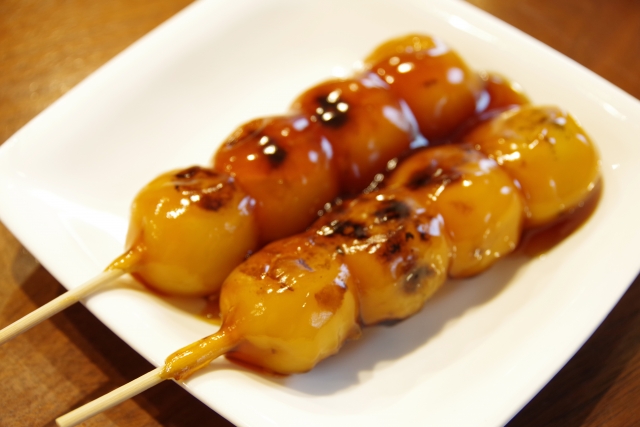
Dango comes in a variety of flavors, but mitarashi dango is a crowd favorite, covered in a delicious sweet-savory glaze that blends soy sauce, sugar, and starch.
Other beloved varieties include hanami dango, known for its three distinct colors; kinako dango, which is lightly dusted with roasted soy flour; and anko dango, generously topped with red bean paste.
These round dumplings, usually served in groups of three to five on a skewer, stand as a symbol of togetherness and joy within Japanese culture that are enjoyed year-round. Certain dango types also pair wonderfully with green tea, making them a perfect dessert, snack, or festive treat.
Taiyaki: Fish-Shaped Sweet Treat
Taiyaki, debuting in 1909, was Japan's new version of the already beloved imagawayaki—a snack that features bean paste wrapped in a flour-based dough. Shaped like a fish, this street food favorite is named after the tai fish it resembles.

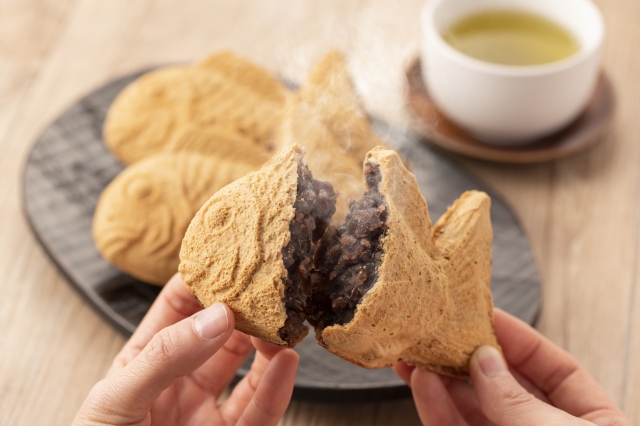
While the classic filling is a sweet red bean paste made from adzuki beans, you'll find a variety of other fillings like custard, chocolate, cheese, or sweet potato, keeping things interesting every time you indulge. Who knew a fish-shaped cake could be so appealing?
Onigiri: Rice Ball Snack

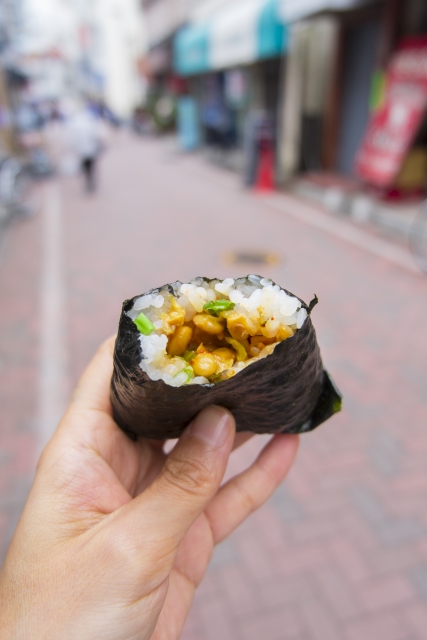
That iconic seaweed-wrapped rice is familiar to many—it's one of Japan's most beloved snacks, perfect for eating on the go.
This delicious rice ball comes in either triangular or cylindrical shapes, snugly wrapped in nori. Inside, you'll find traditional fillings ranging from pickled ume (umeboshi) and salted salmon to katsuobushi and kombu, among others.

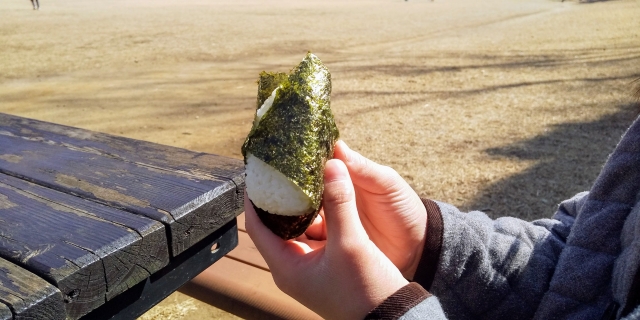
These salty or sour fillings serve as natural preservatives, making onigiri a convenient and tasty option for on-the-spot hunger pangs.
Senbei: Crunchy Rice Crackers

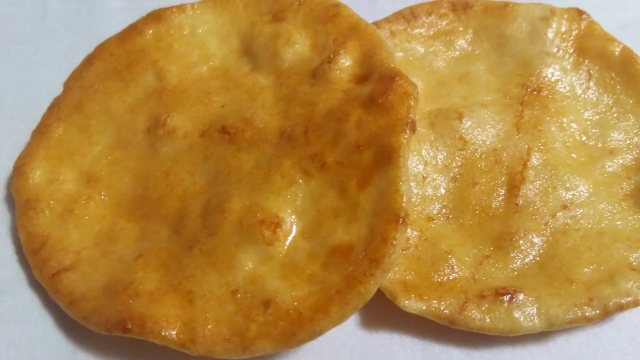
Grab a cup of green tea and savor the crunch of a delicious Japanese rice cracker. Senbei, available in an impressive variety of sizes, shapes, and tastes, are a true culinary treat.
These crackers are typically baked or grilled, getting their rich taste from soy sauce and mirin, a sweet rice wine seasoning. Mostly savory, yet occasionally sweet, senbei are made from non-glutinous rice.


As one of Japan's most ancient and cherished snacks, dating back to the Tang Dynasty, senbei holds a special place in the culture.
Not only are they a symbol of hospitality, offered to guests as a gesture of welcome, but in the historic city of Nara, even the sacred deer have developed a taste for these treats, often bowing to request a bite!
Yakisoba: Stir-Fried Buckwheat Noodles
On the go and looking to fill up with some festival faves? Yakisoba is your go-to. It starts with pork, usually, sizzling on a hot steel griddle. Then comes a mix of chopped cabbage, onions, and those signature yakisoba noodles, all tossed together with a splash of water or sauce.

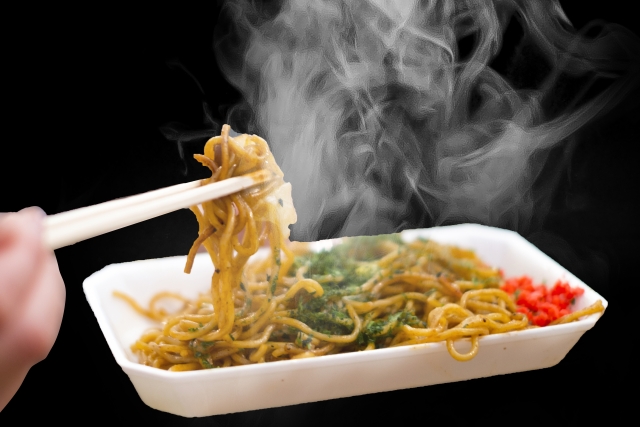
Despite what the name might suggest, these noodles are actually wheat-based, not made from soba (buckwheat), setting them apart as a uniquely delicious Japanese creation.
The best part is that as you wander from one prefecture to another, the yakisoba you taste can vary, so you’re in for a new experience with each stop on your journey.
Kushiten: Not Your Average Tempura
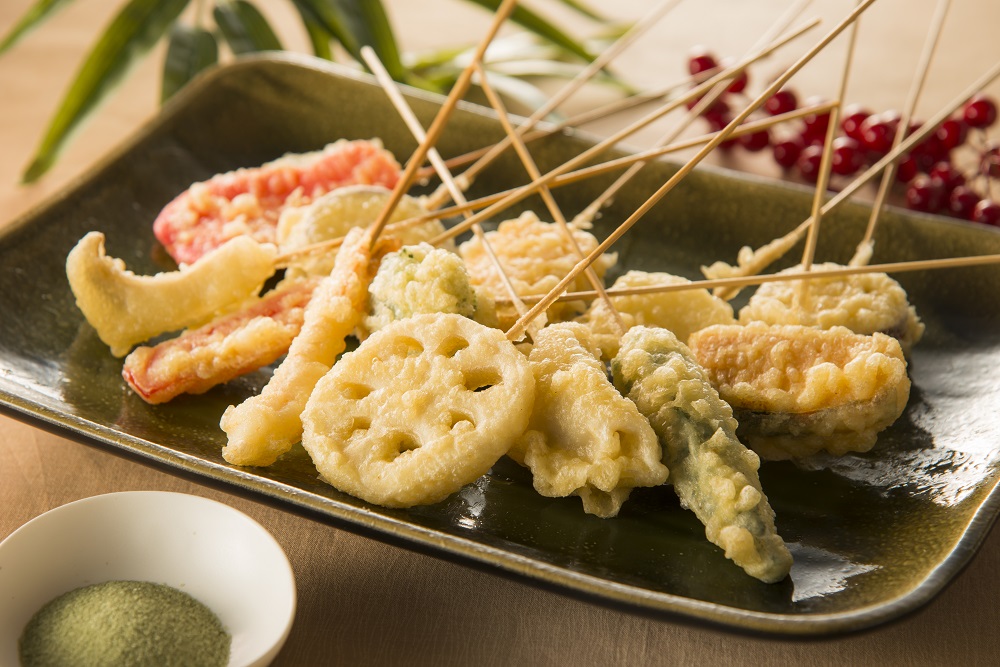
Image: Kushiten Buffet Kushiyo
Keen on sampling the best Japanese street eats? Make sure to include kushiten on your foodie checklist. This dish is essentially skewered Japanese fish cake, also known as tempura skewers.
Kushiten consists of surimi (a white fish paste) that's been finely pureed and cooked—either steamed, grilled, or deep-fried—until it reaches the perfect firmness.
With "kushi" translating to "skewer," these fish cakes are conveniently served on bamboo sticks, making them super easy to enjoy on the go.
Gyoza: Japanese Dumplings

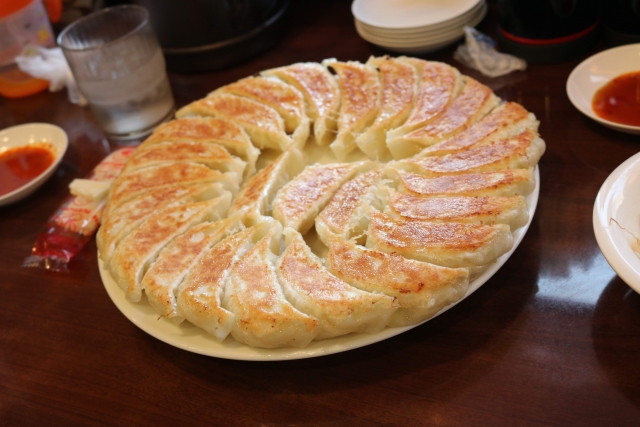
Gyoza, those juicy, mouth-watering Japanese dumplings, come packed with a mix of ground meat, cabbage, ginger, garlic, and Chinese chives (known as Nira in Japan).
From the pan-fried and steamed Yaki-Gyoza, Japan's favorite that crisps up like Chinese potstickers, to the golden, deep-fried Age-Gyoza that skips the steam for an all-crisp finish.

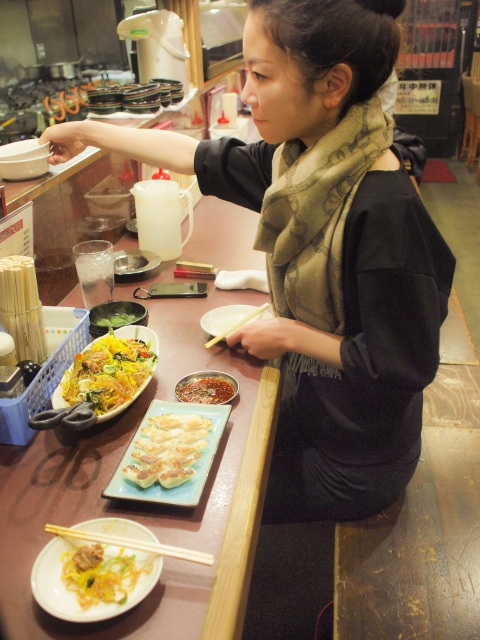
And for a healthier twist, Mushi-Gyoza are steamed in bamboo, offering a lighter option. Then there's Sui-Gyoza, boiled to perfection for a tender, chewy bite without the crisp. Each type promises a unique gyoza experience, offering a satisfying bite into a deliciously juicy filling.
Ramen: The Iconic Japanese Noodle Soup

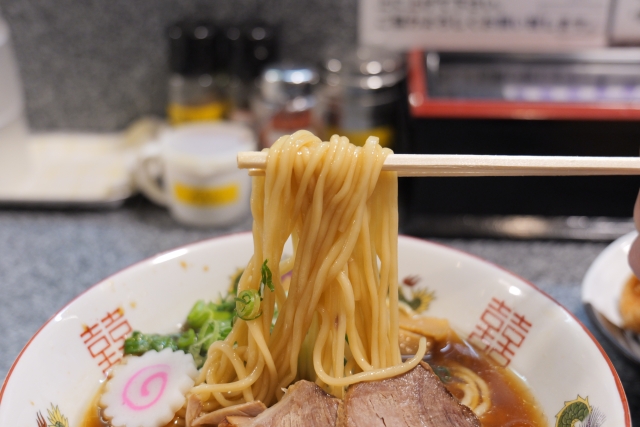
Ramen, originally a humble Japanese noodle soup, has transformed from just street food to a global culinary phenomenon. Ramen, a dish many consider the epitome of Japanese cuisine, actually began its journey in Japan in the mid-1800s, thanks to Chinese influence.
Comprised of wheat flour, salt, water, and kansui, it wasn't long before these springy, yellow noodles became a Japanese staple, especially post-World War II. As time passed, ramen evolved into a myriad of regional specialties, each boasting unique flavors, preparation methods, and culinary twists.

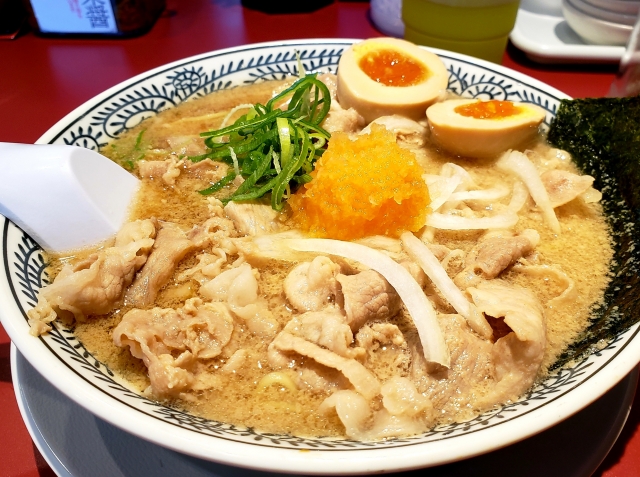
Shoyu ramen, a traditional favorite, is renowned for its broth—a rich concoction simmered for hours with pork, chicken, vegetables, seaweed, and dried fish, then seasoned with soy sauce for that final umami punch.
Typically paired with thin, wavy noodles, it's garnished with scallions, nori, roasted pork, naruto, and bamboo shoots, striking a perfect balance on the richness scale.
No matter which type of ramen ends up stealing your heart, this noodle soup dish is a year-round delight, perfect for any meal where a warm, savory, and satisfying bite is needed!
Kakigori: Shaved Ice Dessert

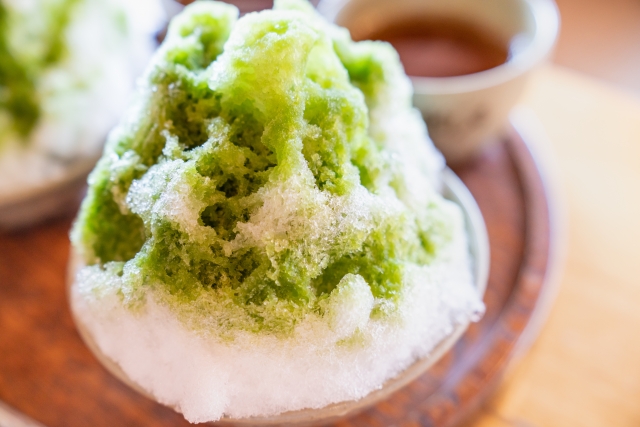
Kakigori is Japan’s refreshing shaved ice dessert that combines finely shaved ice with delicious syrups and often a drizzle of condensed milk for that perfect sweet touch.
Traditionally made using a hand-cranked machine to get that ice just right, you can still find artisans today who prefer the old-school method, even though electric shavers are now the norm.


Unlike your average flavored ice, Kakigori is made from pure, often mineral water ice, sourced directly from natural springs and carefully tempered to create the ideal shave.
Whether you go for classic flavors like strawberry and green tea or adventurous ones like "Blue Hawaii" and sweet plum, Kakigori is a guilt-free pleasure. It's been cooling off Japan since the 11th century, even earning its own day on July 25th, celebrated in streets, festivals, and specialty shops alike.
Craving Some? Time to Treat Yourself!

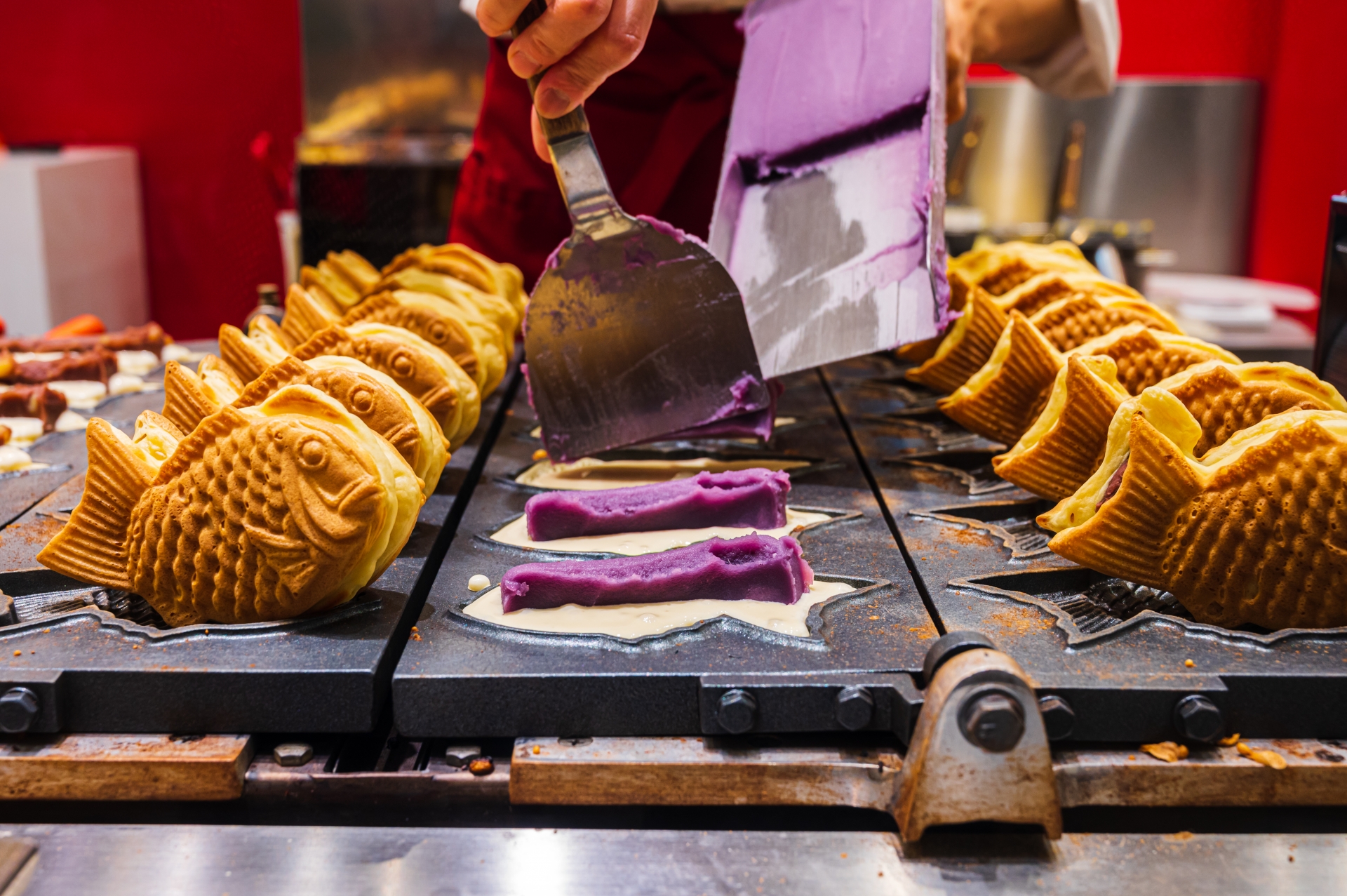
While the lively Japanese street food scene is typically experienced wandering the streets of Japan, not everyone can make the trip soon, yet the craving for those mouthwatering treats persists.
Good news: in today's interconnected world, countries are more than happy to share their traditional food with the rest of the globe. This includes Japanese chefs and local food artisans preparing these authentic dishes specifically for international foodies.


Now, it’s become possible to order these Japanese street foods online, straight from the heart of Japan, and savor them in the comfort of your own home.
How so, you ask? Through ZenPlus-–the ultimate online shopping hub for everything Japanese!
For almost a decade, ZenPlus has bridged the gap between Japan and the world, allowing eager international shoppers to dive into over 5 million authentic Japanese products. These items are showcased by more than 3,000 local retailers, bringing the best of Japan directly to your doorstep.


All you need to do is pop the name of the food (or any other Japanese item you've been dreaming about) into the search bar, fill up your cart to your heart's content, and hit the order button once your shopping spree is done.
From there, it's just a short wait for the ZenPlus team of experts to carefully prepare your order for shipping, ensuring it arrives smoothly at your front door.
Get ready to experience Japan in all its glory, right from the comfort of your home!
About The Writer
Meet Mariam - a freelance writer whose heart beats for the captivating world of Japanese culture. She's fascinated by the breathtaking cherry blossom trees, the irresistible traditional dishes and snacks, the timeless fashion, the adorable natural makeup, and of course, the world-famous anime, just to name a few of her passions. Now, with boundless creativity and determination, she aims to deliver the most valuable content for readers to offer them a glimpse into her passions in life.

